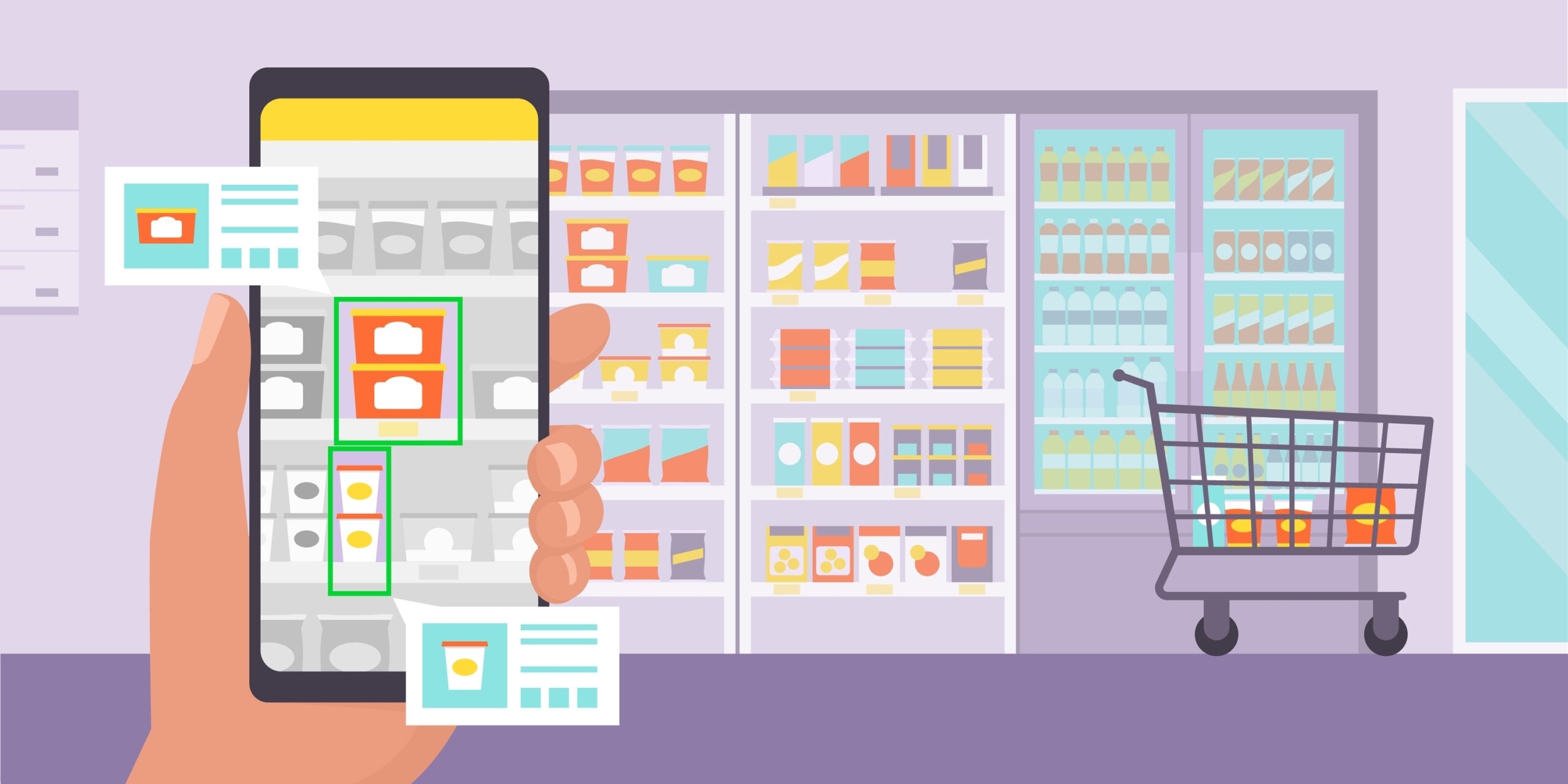In today’s rapidly evolving business landscape, digital transformation has emerged as a powerful catalyst, reshaping global industries. As technology advances, its impact extends beyond mere operational efficiency—it’s now steering the course toward sustainability, particularly in retail businesses. With an ever-increasing focus on environmental responsibility and consumer demands for eco-conscious practices, the retail sector finds itself at a crucial juncture where digital transformation is driving sustainability initiatives. In this blog post, we’ll delve into the transformative power of digital technology in the retail industry and uncover how it is fueling and enhancing sustainability efforts, paving the way for a more eco-friendly and socially responsible future.
Digital transformation as an overall trend
Digitization has emerged as a pervasive industry trend, fundamentally reshaping business operations. From automating processes to enhancing customer experiences, it offers many opportunities for growth and efficiency. In today’s competitive landscape, businesses must wholeheartedly embrace digitization to stay relevant, thrive, and remain competitive in a rapidly evolving business world.
Understanding digital transformations
Digital transformation, in the context of business, refers to the comprehensive process of integrating digital technologies into various aspects of an organization’s operations, strategies, and culture to fundamentally change how it operates and delivers value to customers. This transformation often involves converting analog processes and data into digital formats, making them more accessible, efficient, and capable of leveraging the power of data analytics, automation, and connectivity.
In recent years, the adoption of digitization has witnessed remarkable growth across industries. Businesses that embrace digitization are more agile and better equipped to meet the evolving demands of the modern market. As data becomes the lifeblood of decision-making, digital tools empower organizations to derive actionable insights from large datasets, leading to more informed strategies and increased efficiency. Furthermore, the rise of eCommerce, cloud computing, and mobile applications has amplified the significance of digitization, enabling companies to reach wider audiences and deliver enhanced customer experiences. Integrating digital technologies is not merely a competitive advantage; it’s a fundamental necessity for businesses looking to thrive in the digital age.
Benefits of digital transformation in retail
According to McKinsey research, 90 percent of companies have launched digital transformation initiatives, with most seeking revenue-related benefits. However, many additional benefits remain, including:
Increased operational efficiency and cost reduction
Digitization optimizes business processes, automates tasks, and reduces manual errors, improving operational efficiency. Such digitization, in turn, lowers operating costs, streamlines resource allocation, and enhances overall profitability.
Enhanced data analysis and decision-making
Digitization and computer learning empowers businesses to collect, analyze, and interpret large volumes of data, providing valuable insights. This data-driven approach enables informed decision-making, helping organizations develop more effective strategies, improve product offerings, and better understand customer behavior.
Improved customer experiences and engagement
By leveraging digital tools and platforms, businesses can create personalized interactions, deliver tailored content, and offer seamless online experiences. Improved interactions with customer-centric touchpoints increase customer satisfaction and engagement, building stronger brand loyalty.
Scalability and flexibility for future growth
Digitization equips businesses with the agility to adapt to changing market conditions and scale operations as needed. It allows for quick exploration of changes to pricing, new markets, products, or services, ensuring the organization remains competitive and prepared for future growth opportunities.
Digitization as a competitive necessity
Digitization has evolved from a mere advantage to a necessity in today’s business landscape. Companies that resist digital transformation risk falling behind competitors who have seized the opportunities it offers. Take, for instance, the retail giant Amazon, which disrupted traditional retail by harnessing digital technology to deliver a seamless online shopping experience. Another example is Netflix, which revolutionized the entertainment industry by leveraging digitization to provide personalized content and disrupt the traditional cable TV model. These longstanding cases highlight how businesses that fully embrace digitization can stay competitive and redefine entire industries, emphasizing the importance of digitization as a strategic move for any organization looking to thrive in the modern market.
The digital transformation in retail
Digital transformation in the retail industry entails a comprehensive overhaul of traditional business models and operations to leverage cutting-edge technologies and meet the evolving demands of today’s consumers. Technologies like artificial intelligence (AI), data analytics, augmented reality (AR), virtual reality (VR) and digital twins are at the forefront of this revolution. For instance, chatbots and virtual assistants powered by machine learning provide product recommendations and streamline inquiries, enhancing the shopping experience.
Data analytics tools sift through vast amounts of customer data, enabling retailers to digest big data and make data-driven decisions, forecast trends, and create highly-targeted marketing campaigns. Armed with that business intelligence, digital twin technologies can reshape the in-store experience by creating immersive shopping environments.
For instance, IKEA’s AR app lets customers see how furniture would look in their homes, while clothing retailers offer virtual fitting rooms for trying on outfits virtually. These examples showcase how retail digital transformation is about embracing technology to provide consumers with more personalized, efficient, and engaging experiences.
Sustainability as a byproduct of digitization
Sustainability initiatives have emerged as a significant byproduct of digitization, driven by the increasing consumer demand for sustainable products and ethical business practices. As technology facilitates transparency, consumers are more informed and conscious of their purchasing decisions’ environmental and social impacts. Retailers are increasingly addressing these concerns, adopting sustainable practices throughout their supply chains, from sourcing raw materials to reducing carbon footprints in logistics. In doing so, they align with evolving consumer values, improve their brand reputation, and foster customer loyalty.

Digital transformation enablers for sustainability
Product visualization
AR product visualization empowers consumers to visualize products within the context of their daily lives, helping them make more informed purchasing decisions, as mentioned above with the Ikea example. This technology potentially reduces the rate of returns, cutting down on the associated transportation and packaging waste. For instance, in the fashion industry, AR enables customers to virtually try on clothing and accessories, allowing them to see how a particular item fits and complements their style before making a purchase. By embracing AR for product visualization, retailers enhance the shopping experience and contribute to a more sustainable and eco-friendly retail landscape, aligning with the global shift towards responsible and environmentally conscious consumer practices.
Supply chain optimization
Another compelling illustration of sustainability through digitization is found in supply chain optimization, where digital twin simulations play a pivotal role. Retailers can fine-tune and streamline logistics operations by creating digital replicas of their supply chain networks. For instance, global retail giants are employing digital twin simulations to optimize the routing of goods, minimizing transportation distances and the associated carbon footprint. Additionally, this technology allows retailers to test innovative eco-friendly packaging solutions and modes of transportation before implementation. By embracing digital twins for supply chain optimization, retailers can not only enhance business efficiency but also reduce their environmental impact.
Sustainable design
Virtual reality and digital twin technology empowers retailers to craft sustainable and environmentally friendly store layouts, ultimately reducing resource consumption and waste. By creating virtual, immersive store designs, retailers can experiment with various layouts, materials, and energy-efficient features without needing physical prototypes or extensive resource usage. For instance, digital simulations allow businesses to test eco-friendly materials for displays and flooring in fashion retail, optimizing sustainability. Similarly, in grocery retail, digital twins can fine-tune store layouts for maximum energy efficiency and product placement, minimizing waste and energy consumption. This embrace of digital twin technology in design fosters sustainability and positions retailers at the forefront of environmentally responsible practices, in alignment with the global shift towards greener and more sustainable retail operations.
Training and education
Virtual-based training programs enhance employee skills and significantly reduce the carbon footprint associated with traditional training methods that require employees to travel to physical training centers. For instance, in the fashion retail sector, employees can receive visual merchandising training in a virtual store setup, eliminating the need for extensive travel and reducing associated emissions. Similarly, in the hospitality industry, staff can undergo customer service training in virtual hotel environments, sparing the environment from unnecessary travel-related pollution. The retail sector empowers its workforce by harnessing VR for training and education. It embraces a more sustainable approach to skill development, aligning with the growing global commitment to reducing carbon emissions and fostering eco-friendly practices.
Testing before production
Digital twins also offer retailers and brands an innovative way to test and refine various aspects of their operations while significantly reducing waste. A prime example lies in the realm of packaging and store layout planning. With virtual technology, businesses can virtually visualize and experiment with different packaging designs and in-store placements before the actual printing and production stages.
For example, InContext had a manufacturing client test two new packaging concepts in VR, both of which had the potential of saving them more than $2 million annually in packaging production costs. However, the virtual testing identified that neither of the new designs would be able to maintain the brand’s sales – each dropped in on-shelf noticeability, pick-up rates, and conversions to sale. The client was able to halt the new packaging design before it ever went into production, saving them well over $500,000 in redesign and production costs and the risk of a significant loss in revenue. Beyond avoiding the potential loss of sales, virtual testing minimizes the environmental impact of discarded prototypes and trial-and-error processes common in the retail industry.
Excited about all the reductions you could gain by implementing digital transformation in retail? There’s more:
Reduced Travel: With VR-based virtual showrooms and meetings, professionals can collaborate and conduct meetings from the comfort of their own offices or homes. This not only enhances accessibility but also dramatically lowers the carbon emissions linked to business travel.
Reduced Store Footprint: VR and AR mobile apps and platforms enable retailers to reduce their physical store footprint, significantly reducing construction and energy consumption. By minimizing the need for sprawling brick-and-mortar spaces, businesses can trade construction materials and energy expenses for immersive shopping experiences while reducing their carbon footprint.
Reduced Waste: AR apps are making significant strides by replacing traditional printed catalogs and flyers. This digital transition provides customers with immersive and interactive experiences. It reduces paper consumption and waste, underscoring the role of technology in fostering more sustainable retail practices while delivering engaging and informative content to customers in a more responsible and environmentally conscious manner.
Incorporating new technologies like VR and AR into retail operations enhances customer experiences and business efficiency, contributing to a more sustainable and environmentally responsible retail industry.
Partner with InContext to meet your sustainability goals
The synergy between digital transformation and sustainability in the retail industry has illuminated the path to a more environmentally and socially responsible future. At InContext, we understand that sustainability goals are unique and personal, so we tailor our services to meet your needs. Our digital twin technology, including virtual and augmented reality platforms — ShopperMX and SMX GO — significantly promote sustainability in the retail sector. By embracing digital technologies and forging partnerships with leaders like InContext, retailers can meet their sustainability goals, enhance brand reputation, foster customer loyalty, and secure long-term profitability. Let InContext be your trusted partner for a more successful and sustainable future.





